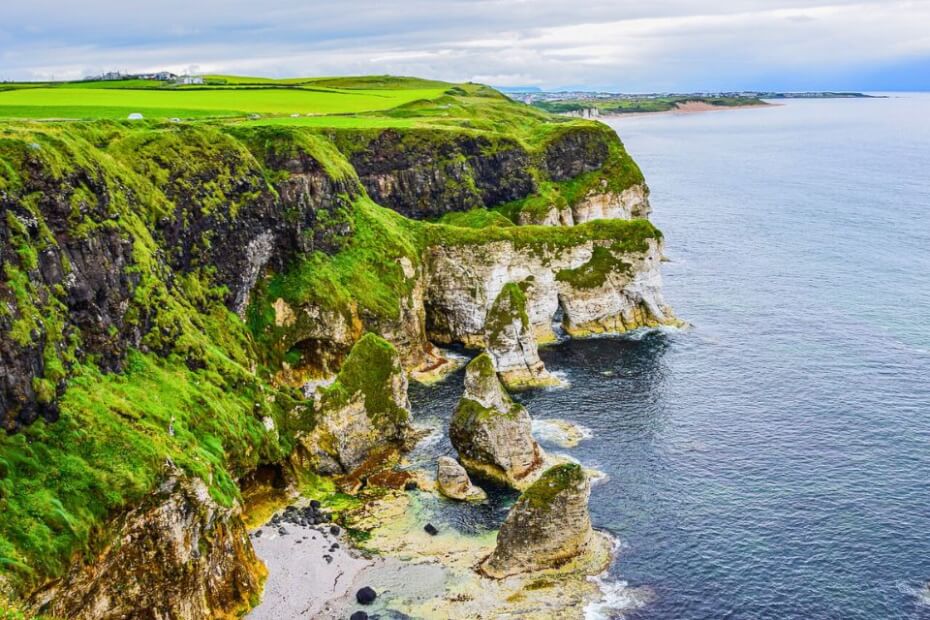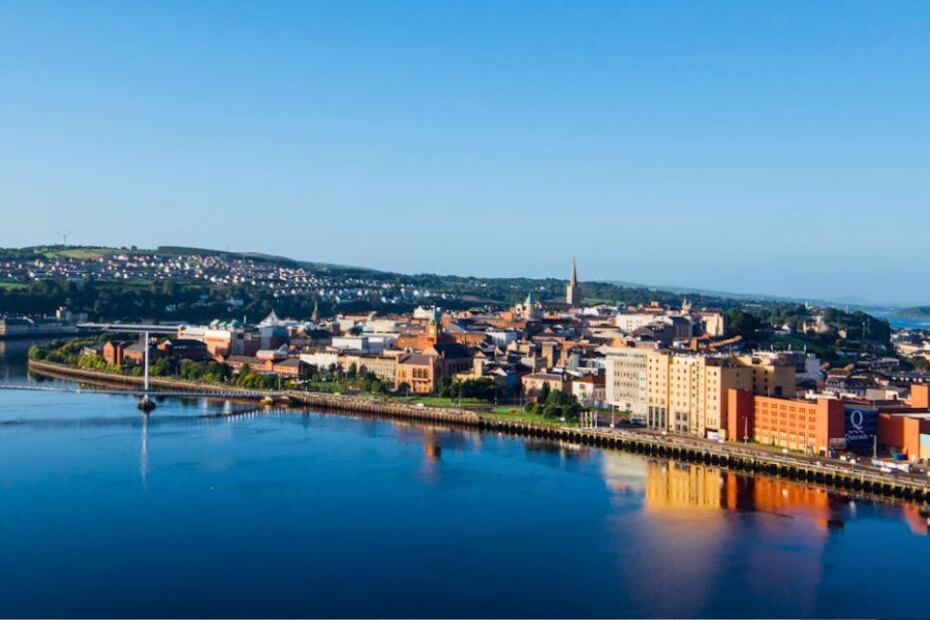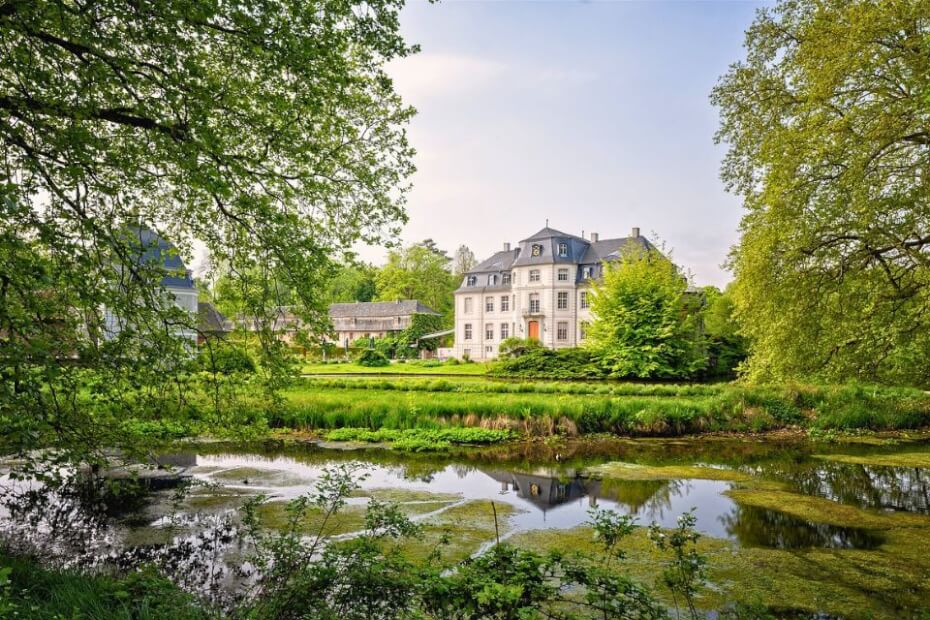
Northern Ireland, part of the United Kingdom (UK), has a captivating history, picturesque landscapes, and vibrant culture. With its mix of bustling cities, coastal retreats, and iconic landmarks, it’s a destination that promises unforgettable experiences.
Exploring Northern Ireland is now made safer and easier with the new Electronic Travel Authorization (ETA) system. It requires non-visa UK travelers to apply for pre-travel authorization, ensuring all visitors are -prescreened before arrival.
This guide covers Northern Ireland’s top cities, must-visit attractions, practical travel tips, and the ETA to help visitors plan their adventure.
A quick history of Northern Ireland
The history of Northern Ireland is both complex and fascinating. The 1921 Anglo-Irish Treaty divided Ireland into two. The southern 26 counties formed the Irish Free State, now the Republic of Ireland. On the other hand, the six northern counties remained part of the UK.
During the mid-20th century, the region faced significant political and social conflict, known as “the Troubles.” However, peace was restored following the Good Friday Agreement in 1998.
Today, Northern Ireland celebrates its diverse heritage and is recognized as a welcoming and peaceful destination for visitors.
Why visit Northern Ireland?
Northern Ireland is where history, culture, and natural beauty come together. It offers a little bit of everything: rich history, dramatic natural scenery, and modern charm.
Whether exploring Belfast’s Titanic heritage, walking along Derry’s historic walls, or enjoying Bangor’s coastal beauty, there’s something for everyone.
Combine this with friendly locals and easy accessibility, and it’s no surprise that Northern Ireland continues to attract tourists worldwide.
Belfast: The Capital of Northern Ireland
Belfast is a vibrant city where history meets modernity. Once the shipbuilding capital of the world and home to Harland and Wolff—the creators of the Titanic—Belfast has transformed into a cultural and economic hub.
Top attractions in Belfast include:
- Titanic Belfast: An interactive museum dedicated to the Titanic, its creation, and its legacy.
- Belfast Castle and Cave Hill: A historic landmark offering panoramic city views.
- St. George’s Market: A bustling spot for local food, crafts, and live music.
- Crumlin Road Gaol: A fascinating glimpse into Belfast’s past through this 19th-century prison.
Nearby, the Giant’s Causeway, a UNESCO World Heritage Site, is a must-visit. This natural wonder, with its hexagonal basalt columns, is just a 90-minute drive from the city.
Derry/Londonderry: A City of Resilience

Often called Derry, this walled city is famous for its intact 17th-century defensive walls and its role in Ireland’s history. Officially, its name is “Londonderry,” but “Derry” is more commonly accepted locally.
Visitors must not miss these top attractions in Derry
- City Walls: Walk along the mile-long walls, offering incredible views and fascinating history.
- Bogside Murals: These colorful murals depict key moments in the city’s past.
- Peace Bridge: A striking symbol of reconciliation connecting both sides of the River Foyle.
- The Guildhall: A stunning neo-Gothic building with beautiful stained-glass windows.
For a taste of tradition, visit the Craft Village, a charming spot filled with artisan shops selling Irish goods.
Lisburn: From Linen to Modern Charm
Lisburn, located eight miles southwest of Belfast, is a city steeped in industrial history. Once the center of the global linen trade, it offers a mix of historical attractions and modern conveniences.
Highlights in Lisburn include:
- Irish Linen Centre and Lisburn Museum: Learn about the city’s linen-making heritage through interactive exhibits.
- Hillsborough Castle: The official residence of the British royal family in Northern Ireland.
- Hilden Brewing Company: Enjoy a tour and tasting at Ireland’s oldest independent brewery.
Lisburn is perfect for a day trip filled with history, gardens, and good food.
Bangor: Coastal Tranquility

Not to be confused with Wales’s Bangor, Northern Ireland’s Bangor is just 13 miles from Belfast. It is a coastal gem that officially earned city status in 2022. Bangor is known for its scenic marina and Victorian charm and is a favorite spot for relaxation.
Must-visit spots in Bangor are:
- Bangor Marina: One of Ireland’s largest marinas, perfect for a leisurely walk.
- Castle Park and Walled Garden: A restored Victorian garden ideal for a peaceful retreat.
- North Down Coastal Path: A scenic walking trail with breathtaking views of the Irish Sea.
Nature lovers will also enjoy Castle Espie Wetland Centre, a haven for birdwatchers and wildlife enthusiasts.
Practical travel tips for Northern Ireland visitors
The best time to visit Northern Ireland is from May to September. The mild weather and long daylight hours during those months allow travelers to explore more. However, travelers must bring layers and waterproof clothing, as the weather can change quickly.
Getting around Northern Ireland is also easy, with Translink operating buses and trains across the region. Car rentals are also available and ideal for exploring rural areas like the Antrim Coast.
Despite being on a different island, Northern Ireland uses the British pound as currency. Many businesses accept cards, but having cash is recommended for small towns.
New ETA requirement for Northern Ireland visitors
Starting in 2025, travelers from visa-exempt countries must apply for an ETA. Once issued, the digital travel permit is electronically linked to their passport for easier checks at border points.
To apply for an ETA, travelers must complete an online application form on the UK Government website or the UK ETA mobile app.
They must provide personal, contact details, and passport information, answer security questions, and pay the £10 application fee.
ETA application processing typically takes three days, give or take. However, there may be instances when it takes more than three days. To avoid delays, travelers must apply for their ETA well before their intended travel to Northern Ireland.
An ETA is valid for two years unless the passport linked to it expires earlier. During this period, ETA holders can travel to the UK multiple times for short stays or up to six months per visit.
Visa-required travelers and those denied an ETA must apply for a UK visa to visit Northern Ireland.
The same applies to those planning to work, study for more than six months, or live in the UK. The UK ETA scheme does not affect the UK visa application system.

